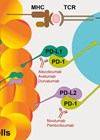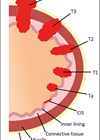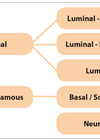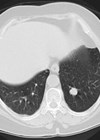Bladder cancer (BC) is the ninth most common cancer worldwide with a yearly incidence of approximately 430,000 cases. There is a male predominance and it is the seventh most common cancer in men worldwide [1]. Non-muscle invasive bladder cancer (NMIBC) represents the majority (approximately 75%) of all BCs, and approximately 25% of cases are muscle-invasive (MIBC) at diagnosis. Carcinoma in situ (CIS) of the bladder are high-grade lesions which have a high-risk of recurrence and progression to MIBC [1,2].
The mainstay of treatment of NMIBC is transurethral resection of bladder tumour (TURBT) and surveillance. The overall five-year survival of patients with superficial disease is relatively high (>75% vs. metastatic disease, ~6%), however, a significant number of these patients (40-80%) will have recurrence or progression to higher stages including muscle invasion [1,3-5]. The cornerstone of surveillance for NMIBC is cystoscopy and urine cytology. Although cystoscopy is the gold-standard for detecting BCs, it is an operator dependent test and sensitivity and specificity range from 62 to 84% and 43 to 98%, respectively.
“The rapid advances in profiling techniques in the fields of genomics, transcriptomics and proteomics have advanced the field of urinary biomarkers”
There are risks (discomfort, infection and bleeding) associated with the procedure and cystoscopic surveillance carries significant costs to the healthcare system. Urine cytology is limited by its poor sensitivity especially for low-grade tumours and false positives due to benign inflammatory conditions. There has been significant interest in developing cost-effective and non-invasive strategies to improve the detection of BC.
The rapid advances in profiling techniques in the fields of genomics, transcriptomics and proteomics have advanced the field of urinary biomarkers. Urinary biomarkers have several potential applications including: 1) diagnosing BC in patients presenting with haematuria, 2) detecting recurrences and progression in patients treated for NMIBC, 3) assessing response to Bacillus Calmette-Guerin (BCG) treatment and 4) as an adjunct in cases whereby cytology is equivocal. Several urinary biomarkers have been reported and four have been approved by the US Food and Drug Administration (FDA) for use in the surveillance of patients with NMIBC (NMP22, BTA, UroVysion and ImmunoCyt). However, at present, guidelines do not recommend using these tests to replace cystoscopy. This review provides an overview of the FDA-approved and experimental urinary biomarkers (Tables 1 and 2).
Table 1: FDA approved and experimental urinary biomarkers and tests discussed in this review.
Biomarker / test: Nuclear Matrix Protein-22 (NMP22)
Type of biomarker: Protein-based
Components: Assay for NMPs. Quantitative ELISA and qualitative POC tests available.
FDA-approved: Yes
Biomarker / test: Bladder Tumour Antigen (BTA)
Type of biomarker: Protein-based
Components: Monoclonal antibody to human complement factor H related protein (CFHR). Quantitative ELISA and qualitative POC tests available.
FDA-approved: Yes
Biomarker / test: UroVysion
Type of biomarker: Fluorescence in situ hybridisation (FISH)
Components: DNA probes to identify aneuploidy in chromosomes 3, 7 17 as well as a locus specific probe to check for loss of 9p21.
FDA-approved: Yes
Biomarker / test: ImmunoCyt assay
Type of biomarker: Immunofluorescence
Components: Fluorescently labelled monoclonal antibodies to detect a glycosylated form of CEA and two mucins.
FDA-approved: Yes
Biomarker / test: CxBladder Monitor
Type of biomarker: mRNA-based
Components: Real time PCR for 5 mRNA biomarkers (CDK1, HOXA13, MDK, IGFBP5, CXCR2).
FDA-approved: No
Biomarker / test: CertNDx
Type of biomarker: Combination of genomic, proteomic and epigenetic based
Components: Tests for FGFR3 mutations, quantified matrix metalloproteinase 2 (MMP-2), and hypermethylation of TWIST1 and NID2.
FDA-approved: No
Biomarker / test: Urinary Bladder Cancer Test (UBC test)
Type of biomarker: Protein-based
Components: Assay for cytokeratins 8 and 18.
FDA-approved: No
Biomarker / test: Xpert Bladder Cancer Monitor
Type of biomarker: mRNA-based
Components: Real-time PCR for 5 mRNAs (ABL1, CRH, IGF2, UPK1b and ANXA10)
FDA-approved: No
Biomarker / test: Survivin
Type of biomarker: Protein-based
Components: Assay for survivin (Anti-apoptotic protein).
FDA-approved: No
Table 2: Pooled performance characteristics of FDA-approved urinary biomarkers [31].
Biomarker / test: NMP22 quantitative
Sensitivity (%): 61
Specificity (%): 71
Positive Likelihood ratio (95% CI): 2.10 (1.58-2.80)
Negative Likelihood ratio (95% CI): 0.55 (0.44-0.69)
Biomarker / test: NMP22 qualitative
Sensitivity (%): 70
Specificity (%): 83
Positive Likelihood ratio (95% CI): 4.20 (3.22 -5.47)
Negative Likelihood ratio (95% CI): 0.36 (0.16-0.81)
Biomarker / test: BTA quantitative
Sensitivity (%): 58
Specificity (%): 79
Positive Likelihood ratio (95% CI): 2.77 (1.66-4.61)
Negative Likelihood ratio (95% CI): 0.54 (0.39-0.76)
Biomarker / test: BTA qualitative
Sensitivity (%): 60
Specificity (%): 76
Positive Likelihood ratio (95% CI): 2.53 (1.92-3.34)
Negative Likelihood ratio (95% CI): 0.52 (0.47 -0.59)
Biomarker / test: UroVysion
Sensitivity (%): 55
Specificity (%): 80
Positive Likelihood ratio (95% CI): 2.75 (1.95-3.89)
Negative Likelihood ratio (95% CI): 0.56 (0.42-0.76)
Biomarker / test: ImmunoCyt
Sensitivity (%): 75
Specificity (%): 76
Positive Likelihood ratio (95% CI): 3.09 (2.56-3.72)
Negative Likelihood ratio (95% CI): 0.33 (0.24-0.46)
FDA approved biomarkers
Nuclear Matrix Protein 22
Nuclear matrix proteins (NMPs) act as scaffolds in the nucleus of cells and are released from the nuclei of dying urothelial tumour cells. NMP22 is the most studied of these and two assays have been developed; 1) NMP22BC, a quantitative ELISA test and 2) NMP22 BladderCheck, a qualitative point of care (POC) test. Assays for NMP22 can be used as an aid for BC diagnosis in patients with haematuria and can be used to monitor for cancer recurrence following treatment.
The NMP22 assay, cytology, and cystoscopy were investigated in a study of 668 patients undergoing surveillance for BC. The NMP22 assay and cystoscopy detected 50% and 91% of the 103 recurrences, respectively. The NMP22 test detected eight of the nine cancers initially missed by cystoscopy, for a combined sensitivity of 99%. Cytology detected three of the nine cases initially missed at cystoscopy. The NMP22 assay had a specificity of 87% [6]. In a study of 2222 patients with NMIBC and negative urine cytology, NMP22 levels were significantly associated with disease recurrence and progression (p<0.001) [7]. A pooled analysis of seven studies with 4384 patients with previously treated BC demonstrated a sensitivity and specificity of 60% (range, 50-85%) and 81% (4‑93%) respectively [8]. The performance of NMP22 in predicting future recurrence and progression has been mixed with just a few studies showing an association [7,9,10].
Bladder tumour antigen
The bladder tumour antigen (BTA) test is a protein-based marker utilising a monoclonal antibody to human complement factor H-related protein (CFHR) which is present in high levels in the urine of BC patients. The test is available as both a POC qualitative test (BTA stat) and a quantitative ELISA-based test (BTA TRAK).
Few studies have evaluated BTA in the context of surveillance. In a study with 501 patients with a history of BC, recurrent BC was detected by cystoscopy in 133 (27%). Pre-cystoscopy BTA assay was more sensitive than cytology (56% vs. 19%), but less specific (86% vs. 98%). In six cases in which the BTA assay was positive and cystoscopy was negative, BC was found at the next cystoscopy [11]. A concern with this test is false positives in the setting of haematuria, stone disease, inflammation, recent instrumentation, other urological cancers and BCG lowering the specificity [12]. BTA tests were not shown to be associated with future events such as recurrence (HR: 0.54, 95% CI 0.27-1.08, p=0.08) and progression (HR: 0.67, 95% CI 0.25-1.79, p=0.42) in a prospective study [9].
UroVysion
UroVysion is a cytology-based test utilising fluorescence in situ hybridisation (FISH) DNA probes to identify aneuploidy in chromosomes 3, 7, 17 as well as a locus-specific probe to check for loss of 9p21. The test is FDA-approved to be used as an aid for initial diagnosis of BC in subjects with haematuria and for subsequent monitoring for tumour recurrence in patients previously diagnosed with BC.
Sensitivity and specificity for detecting recurrences in the surveillance setting vary from 13-94% and 63-100% respectively [10]. The performance of the test for detecting CIS and high-grade tumours is higher [13]. UroVysion has been shown to be useful in the setting of equivocal / atypical cytology and the American Urological Association guidelines recommend UroVysion as one of the biomarkers useful in this setting [14,15].
With regards to predicting future events, a retrospective study of 243 patients on NMIBC surveillance with negative cystoscopy and suspicious cytology demonstrated that a positive UroVysion result predicted recurrence (HR: 2.35, 95% CI 1.42-3.90, p=0.001) on multivariable analysis, and progression (HR: 3.01, 95% CI 1.10-8.21, p=0.03) on univariable analysis, in comparison to a negative UroVysion result. However, there was no association between the UroVysion result and tumour recurrence on subsequent surveillance cystoscopy (OR 0.8, 95% CI 0.26-2.74, p=1) [16]. Nonetheless, due to lack of standardisation of testing and need for expensive laboratory equipment UroVysion FISH is currently not used in routine clinical practice.
ImmunoCyt
ImmunoCyt (uCyt+) is a combination of cytology and immunofluorescence utilising fluorescently labelled monoclonal antibodies to detect a glycosylated form of carcinoembryonic antigen (CEA) and two mucins. The test requires urine fixation with ethanol or isopropyl alcohol before shipment to a reference cytopathology laboratory. A minimum evaluation of 500 epithelial cells is required, and the presence of one cell with fluorescence constitutes a positive test. The test is FDA-approved for use in conjunction with urine cytology and cystoscopy. Like UroVysion, the American Urological Association guidelines recommend UroVysion as one of the biomarkers useful in the setting of equivocal / atypical cytology [15].
Sensitivity and negative predictive value (NPV) rates vary from 62-85% and 74-93% respectively [10]. A prospective study of 942 patients demonstrated sensitivity is improved with higher pathological grade (79.3% for G1, 84.1% for G2 and 92.1% for G3 tumours) [17].
ImmunoCyt wasn’t demonstrated to be able to predict future recurrence (HR: 0.65, 95% CI 0.37–1.16, p=0.14) or progression (HR: 0.44, 95% CI 0.17-1.14, p=0.09) in a large prospective study [9]. The test is not thought to be affected by benign conditions, but interpretation is complex and has a steep learning curve. It is associated with interobserver variability, is operator-dependent and has a high test failure rate due to inadequate specimen cellularity [18].
“Although several biomarkers have shown promise, most haven’t as yet been validated in large prospective multicentre clinical studies”
Experimental urinary biomarkers
CxBladder Monitor
CxBladder tests are non-FDA-approved urine-based genomic tests and are used in different contexts including: 1) potentially ruling out BC in low-risk patients with haematuria (CxBladder Triage), 2) complementing cystoscopy for BC detection in the presence of haematuria (CxBladder Detect) and 3) complementing cystoscopy for surveillance of recurrent disease (CxBladder Monitor). The tests identify four mRNA urinary biomarkers which have demonstrated high levels of expression in urothelial cancer (CDK1, HOXA13, MDK, IGFBP5). A fifth mRNA biomarker (CXCR2) of inflammation aids in distinguishing false positive cases in patients with acutely or chronically inflamed urothelium [19,20].
In a prospective study of 803 patients undergoing surveillance for BC, CxBladder Monitor had superior sensitivity (91%) and a NPV (96%) compared with cytology (sensitivity, 22% and specificity, 87%), NMP22 (sensitivity, 11-26% and specificity 86-87%), and UroVysion (sensitivity 33% and specificity 92%) (21). These tests still require large scale independent validation.
CertNDx
CertNDx is a urine-based assay developed for the evaluation of haematuria and surveillance and assesses mutations in fibroblast growth factor receptor 3 gene which may be associated with lower grade tumours that have a good prognosis [22]. Fibroblast growth factor receptor 3 (FGFR3) belongs to a family of tyrosine kinase receptors. Mutations in the FGFR3 gene can lead to constitutive activation of FGFR3 [23]. These mutations are good prognostic indicators [24]. The assay analyses urine for the presence of FGFR3 mutations, quantified matrix metalloproteinase 2 (MMP-2), and hypermethylation of TWIST1 and NID2. The diagnostic accuracy for detecting BC recurrence was shown in a prospective study of 323 patients to be 92% and 51% respectively for sensitivity and specificity with a negative predictive value of 97.4% [25].
Urinary bladder cancer (UBC) test
UBC detects the presence of cytokeratins 8 and 18 in the urine which are thought to play an active role in tumour invasion. It is a POC test with results available within 10 minutes. Sensitivity and specificity rates vary from 12‑80% and from 77-92% respectively [10]. In a prospective study evaluating a total of 75 patients undergoing surveillance, barbotage and voided urine cytology resulted in a sensitivity of 32.3% and 25.8% and a specificity of 100% and 100% respectively. The UBC test resulted in a maximum sensitivity of 64.5% and specificity of 81.8%. Barbotage cytology and the UBC test were the best dual combination with the highest overall sensitivity of 77.4%. In contrast to barbotage urine cytology alone, adding UBC increased sensitivity from 21.4% to 50% for low grade tumours and from 43.8 to 100% for high grade cancers but reduced specificity from 100% to 77.3% [26].
Xpert Bladder Cancer Monitor
Xpert BC Monitor is an mRNA-based urinary biomarker developed for BC surveillance. The test uses real-time PCR to measure the levels of five different mRNAs (ABL1, CRH, IGF2, UPK1b and ANXA10). These mRNAs are linked to cell proliferation and survival, signal transduction and response to endocrine tests. Xpert BC Monitor has been evaluated in one study which evaluated a total of 155 urine samples in 140 patients with a history of NMIBC undergoing routine follow-up. When compared with urine cytology, Xpert BC Monitor was shown to have higher sensitivity and negative predictive value (84% vs. 33% and 93% vs. 76% respectively.) However, specificity was similar between Xpert BC Monitor and urine cytology (91% vs. 94%). Interestingly, the sensitivity of Xpert BC Monitor for high-grade and low-grade tumours specifically was shown to be high (100% and 77% respectively) [27]. The test also has a rapid processing time requiring less than two minutes of hands-on sample preparation and a total PCR time of approximately 90 minutes. Whilst all these findings are promising, further validation in prospective trials is required [10].
Survivin
Survivin is an anti-apoptotic protein. This protein is elevated in human cancer but almost undetectable in normal human tissues [28]. One study has been published evaluating the potential role of survivin as a urinary biomarker in the surveillance of NMIBC. The study evaluated survivin and NMP22 in voided urine samples from 117 BC patients undergoing cystoscopy and 92 controls. Survivin had superior sensitivity (64%), specificity (93%), PPV (92%) and NPV (67%) in comparison to both NMP22 and urine cytology [29]. In addition, higher levels of survivin were associated with an increased risk of higher grade disease [30]. However, the assay is still in the experimental stages and further development and standardisation is required [10].
Conclusion
At present, cystoscopy continues to be the gold-standard for detection of recurrences in the surveillance setting. Although several biomarkers have shown promise, most haven’t as yet been validated in large prospective multicentre clinical studies. A major disadvantage of many of the urinary biomarkers is their relatively limited ability to detect low-grade cancers. In addition, many of the biomarkers are susceptible to false positives. Compared to urine cytology, the sensitivity of urinary biomarkers is usually higher at the cost of lower specificity. Current urinary biomarkers may have a role in the setting of atypical or equivocal urine cytology.
It is becoming clear that it is unlikely that a single urinary biomarker will have a good enough performance due to complex interactions between molecular pathways and tumour heterogeneity. Biomarkers with future promise will likely need to test for several markers simultaneously. As the use of next-generation sequencing increases, we are likely to see a paradigm shift from candidate-driven approaches to more high-throughput approaches for screening for panels of multiple biomarkers.
TAKE HOME MESSAGE
-
Around 40-80% of patients with NMIBC will progress to higher stages of disease or recur necessitating surveillance, currently consisting of cystoscopy and urine cytology.
-
Repeated cystoscopy for surveillance carries significant costs to the healthcare system. Urine cytology is limited by its poor sensitivity for low-grade tumours and false positives due to benign inflammatory conditions. Therefore, non-invasive and cost-effective strategies are required to improve the detection of recurrences and predict future recurrence and progression.
-
Urinary biomarkers currently approved by the FDA for use in the surveillance of patients with NMIBC include: NMP22, BTA, UroVysion and ImmunoCyt.
-
Other clinical and experimental biomarkers that have been evaluated for surveillance of NMIBC but not FDA-approved as yet include: CxBladder Monitor, CertNDx, UBC test, Xpert BC Monitor and survivin.
References
1. Cumberbatch MGK, Jubber I, Black PC, et al. Epidemiology of bladder cancer: a systematic review and contemporary update of risk factors in 2018. Eur Urol 2018;74(6):784-95.
2. Witjes JA. Bladder carcinoma in situ in 2003: state of the art. Eur Urol 2004;45(2):142-6.
3. Salama A, Abdelmaksoud AM, Shawki A, et al. Outcome of muscle-invasive urothelial bladder cancer after radical cystectomy. Clin Genitourin Cancer 2016;14(1):e43-7.
4. Malmstrom PU, Agrawal S, Blackberg M, et al. Non-muscle-invasive bladder cancer: a vision for the future. Scand J Urol 2017;51(2):87-94.
5. Kaufman DS, Shipley WU, Feldman AS. Bladder cancer. Lancet 2009;374(9685):239-49.
6. Grossman HB, Soloway M, Messing E, et al. Surveillance for recurrent bladder cancer using a point-of-care proteomic assay. JAMA 2006;295(3):299-305.
7. Shariat SF, Savage C, Chromecki TF, et al. Assessing the clinical benefit of nuclear matrix protein 22 in the surveillance of patients with nonmuscle-invasive bladder cancer and negative cytology: a decision-curve analysis. Cancer 2011;117(13):2892-7.
8. Mowatt G, Zhu S, Kilonzo M, et al. Systematic review of the clinical effectiveness and cost-effectiveness of photodynamic diagnosis and urine biomarkers (FISH, ImmunoCyt, NMP22) and cytology for the detection and follow-up of bladder cancer. Health Technol Assess 2010;14(4):1-331.
9. Bell MD, Yafi FA, Brimo F, et al. Prognostic value of urinary cytology and other biomarkers for recurrence and progression in bladder cancer: a prospective study. World J Urol 2016;34(10):1405-9.
10. Soria F, Droller MJ, Lotan Y, et al. An up-to-date catalog of available urinary biomarkers for the surveillance of non-muscle invasive bladder cancer. World J Urol 2018;36(12):1981-95.
11. Raitanen MP. The role of BTA stat test in follow-up of patients with bladder cancer: results from FinnBladder studies. World J Urol 2008;26(1):45-50.
12. Pode D, Shapiro A, Wald M, et al. Noninvasive detection of bladder cancer with the BTA stat test. J Urol 1999;161(2):443-6.
13. Lokeshwar VB, Habuchi T, Grossman HB, et al. Bladder tumor markers beyond cytology: International Consensus Panel on bladder tumor markers. Urology 2005;66(6 Suppl 1):35-63.
14. Lotan Y, Bensalah K, Ruddell T, et al. Prospective evaluation of the clinical usefulness of reflex fluorescence in situ hybridization assay in patients with atypical cytology for the detection of urothelial carcinoma of the bladder. J Urol 2008;179(6):2164-9.
15. Chang SS, Boorjian SA, Chou R, et al. Diagnosis and treatment of non-muscle invasive bladder cancer: AUA/SUO Guideline. J Urol 2016;196(4):1021-9.
16. Kim PH, Sukhu R, Cordon BH, et al. Reflex fluorescence in situ hybridization assay for suspicious urinary cytology in patients with bladder cancer with negative surveillance cystoscopy. BJU International 2014;114(3):354-9.
17. Mian C, Maier K, Comploj E, et al. uCyt+/ImmunoCyt in the detection of recurrent urothelial carcinoma: an update on 1991 analyses. Cancer 2006;108(1):60-5.
18. JS J. ‘Non-muscle invasive bladder cancers (Ta, T1, and CIS)’. In: Wein AJ, Kavoussi LR, Partin AW, Peters CA (Eds). Campbell-Walsh Urology 11th Edition Elsevier; Philadelphia, PA, USA; 2016:2205-22.
19. Holyoake A, O’Sullivan P, Pollock R, et al. Development of a multiplex RNA urine test for the detection and stratification of transitional cell carcinoma of the bladder. Clin Cancer Res 2008;14(3):742-9.
20. O’Sullivan P, Sharples K, Dalphin M, et al. A multigene urine test for the detection and stratification of bladder cancer in patients presenting with hematuria. J Urol 2012;188(3):741-7.
21. Lotan Y, O’Sullivan P, Raman JD, et al. Clinical comparison of noninvasive urine tests for ruling out recurrent urothelial carcinoma. Urol Oncol 2017;35(8):531.e15‑e22.
22. van Rhijn BW, Lurkin I, Radvanyi F, et al. The fibroblast growth factor receptor 3 (FGFR3) mutation is a strong indicator of superficial bladder cancer with low recurrence rate. Cancer Res 2001;61(4):1265-8.
23. van Oers JM, Lurkin I, van Exsel AJ, et al. A simple and fast method for the simultaneous detection of nine fibroblast growth factor receptor 3 mutations in bladder cancer and voided urine. Clin Cancer Res 2005;11(21):7743-8.
24. van Oers JM, Zwarthoff EC, Rehman I, et al. FGFR3 mutations indicate better survival in invasive upper urinary tract and bladder tumours. Eur Urol 2009;55(3):650-7.
25. Fernandez CA, Millholland JM, Zwarthoff EC, et al. A noninvasive multi-analyte diagnostic assay: combining protein and DNA markers to stratify bladder cancer patients. Res Rep Urol 2012;4:17-26.
26. Pichler R, Tulchiner G, Fritz J, et al. Urinary UBC Rapid and NMP22 Test for Bladder Cancer Surveillance in Comparison to Urinary Cytology: Results from a prospective single-center study. Int J Med Sci 2017;14(9):811-9.
27. Pichler R, Fritz J, Tulchiner G, et al. Increased accuracy of a novel mRNA-based urine test for bladder cancer surveillance. BJU Int 2018;121(1):29-37.
28. Birkhahn M, Mitra AP, Cote RJ. Molecular markers for bladder cancer: the road to a multimarker approach. Expert Rev Anticancer Ther 2007;7(12):1717-27.
29. Shariat SF, Casella R, Khoddami SM, et al. Urine detection of survivin is a sensitive marker for the noninvasive diagnosis of bladder cancer. J Urol 2004;171(2 Pt 1):626‑30.
30. Shariat SF, Ashfaq R, Karakiewicz PI, et al. Survivin expression is associated with bladder cancer presence, stage, progression, and mortality. Cancer 2007;109(6):1106-13.
31. Chou R, Selph SS, Buckley DI, et al. Treatment of muscle-invasive bladder cancer: A systematic review. Cancer 2016;122(6):842-51.
Declaration of competing interests: None declared.











